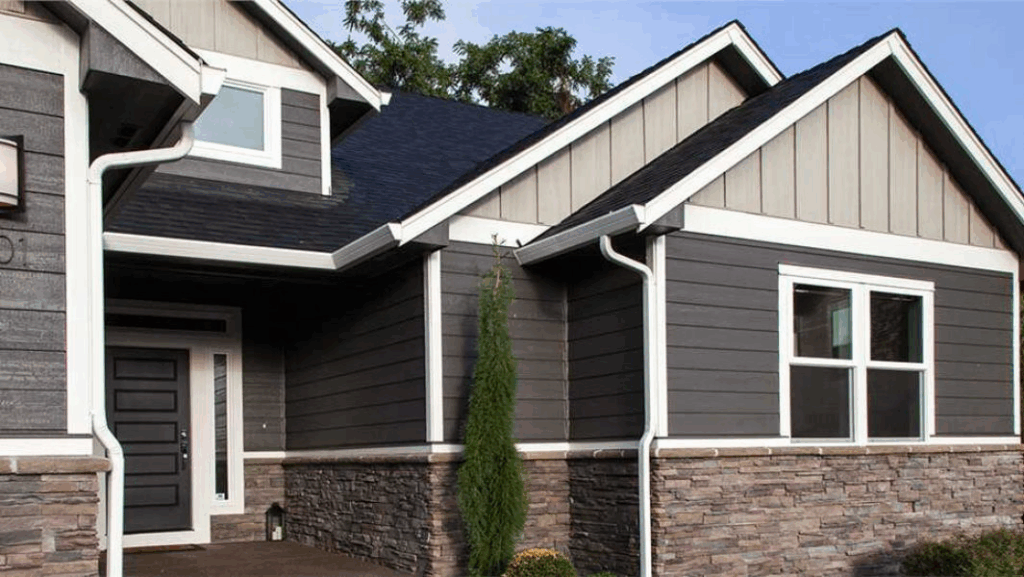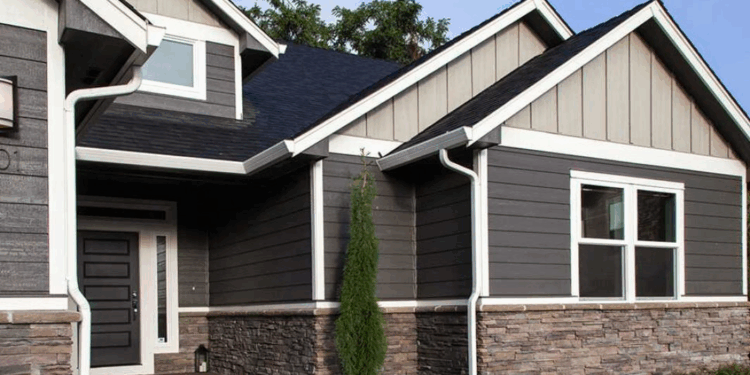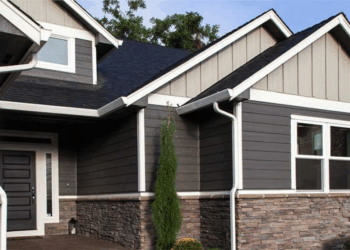
Siding installers near me set the stage for this enthralling narrative, offering readers a glimpse into a story that is rich in detail with casual formal language style and brimming with originality from the outset.
As you delve into the world of siding installation, you'll uncover a wealth of information on choosing the best local installers, understanding different siding materials, navigating cost considerations, and mastering the installation process.
Research on Siding Installers Near Me
When looking for siding installers in your area, it's essential to do thorough research to ensure you find the best professionals for the job. Here are some key points to consider:
Identify the Top-Rated Siding Installers in Your Area
Start by checking online platforms and directories to identify the top-rated siding installers in your area. Look for companies with a solid reputation and positive reviews from previous customers.
Compare Customer Reviews and Ratings for Different Siding Installers
Take the time to read customer reviews and ratings for different siding installers. Pay attention to feedback on the quality of work, professionalism, communication, and overall satisfaction with the services provided.
Discuss the Importance of Choosing Local Siding Installers for Your Project
Choosing local siding installers for your project can have several benefits. Local professionals are familiar with the climate and building codes in your area, which can ensure the siding is installed correctly and meets all requirements.
Share Tips on How to Find Reliable Siding Installers Near You
- Ask for recommendations from friends, family, or neighbors who have recently had siding installed.
- Check online reviews and ratings on trusted websites to gauge the reputation of siding installers.
- Request quotes from multiple installers to compare pricing and services offered.
- Verify that the installer is licensed, insured, and has experience in the type of siding you want to install.
Types of Siding Materials
When it comes to choosing the right siding material for your home, there are several options to consider. Each material has its own unique characteristics, durability, and maintenance requirements. Let's explore the popular siding materials used by installers and compare their pros and cons.
Vinyl Siding
Vinyl siding is one of the most popular choices due to its affordability and low maintenance requirements. It is available in a variety of colors and styles, making it a versatile option for many homeowners. However, vinyl siding may not be as durable as other materials and can crack or fade over time.
Wood Siding
Wood siding provides a classic and natural look to a home. It is durable and can last for many years with proper maintenance. However, wood siding requires regular painting or staining to protect it from the elements and prevent rotting or warping.
It is also more susceptible to insect damage compared to other materials.
Fiber Cement Siding
Fiber cement siding is a popular choice for its durability and resistance to fire and pests. It is low maintenance and can mimic the look of wood or stucco. However, fiber cement siding is heavier and may require professional installation.
It can also be more expensive than other materials.
Metal Siding
Metal siding, such as aluminum or steel, is known for its strength and longevity. It is resistant to fire, rot, and insect damage, making it a durable option for many homeowners. However, metal siding can dent or scratch easily and may require repainting over time to maintain its appearance.When selecting the right siding material for your home, consider factors such as your budget, maintenance preferences, climate, and the overall look you want to achieve.
It's essential to choose a material that not only enhances the aesthetics of your home but also provides long-lasting protection against the elements.
Cost Considerations for Siding Installation
When it comes to siding installation, it's essential to consider the costs involved to budget effectively for your project. The total cost typically includes both material and labor expenses, along with any additional costs that may arise during the installation process
Average Cost Breakdown
- Vinyl Siding: On average, vinyl siding installation can cost between $6,000 to $13,000 for a 1,500 square foot home.
- Fiber Cement Siding: The average cost for fiber cement siding installation ranges from $8,000 to $20,000 for a 1,500 square foot home.
- Wood Siding: Wood siding installation can cost between $10,000 to $25,000 for a 1,500 square foot home.
- Additional Labor Costs: Labor costs can vary depending on the complexity of the installation and the contractor's rates.
Additional Costs to Consider
- Permit Fees: Depending on your location, you may need to obtain permits for the siding installation, which can add to the overall cost.
- Repair Costs: If any damage is found during the removal of old siding, repair costs may increase the total project cost.
- Trim and Finish Work: Additional trim work or custom finishes may also incur extra costs.
Tips for Effective Budgeting
- Get Multiple Quotes: Compare quotes from different siding installers to understand the cost variations and choose the best option for your budget.
- Plan for Contingencies: Set aside a contingency fund to cover any unexpected costs that may arise during the installation process.
- Consider Long-Term Value: While upfront costs are important, also consider the long-term durability and maintenance requirements of the siding material.
Comparing Quotes
- Ask for Detailed Estimates: Request detailed estimates from each siding installer, including material costs, labor fees, and any additional expenses.
- Check References: Look for reviews and references to ensure the quality of work matches the quoted price.
- Negotiate: Don't be afraid to negotiate with contractors to find a price that fits your budget without compromising on quality.
Siding Installation Process
Installing siding on a home involves a series of steps that require precision and attention to detail. Siding installers play a crucial role in ensuring that the siding is properly prepared, measured, cut, and installed to provide a durable and aesthetically pleasing finish to the exterior of the house.
Preparation and Planning
Before the actual installation process begins, siding installers will inspect the exterior of the home to assess the condition of the existing siding (if applicable) and determine the amount of materials needed for the project. They will also make sure that the surface is clean, dry, and free of any debris that could interfere with the installation process.
- Prepare the work area by clearing any obstacles and ensuring a safe and accessible space for the installation.
- Take accurate measurements of the walls to determine the amount of siding required.
- Select the appropriate siding material based on the homeowner's preferences and budget.
Installation Process
Once the preparation is complete, siding installers will begin the installation process by following these steps:
- Start by installing the starter strip at the bottom of the wall to provide a level base for the siding panels.
- Secure the siding panels to the wall using nails or screws, making sure to leave room for expansion and contraction.
- Cut and fit the siding panels around windows, doors, and corners to ensure a seamless finish.
- Install J-channels, corner posts, and other necessary trim pieces to complete the look and provide a finished appearance.
Common Challenges and Tips
During the siding installation process, installers may encounter challenges such as uneven walls, unexpected obstacles, or inclement weather. To ensure a smooth and successful installation, consider the following tips:
Take your time to accurately measure and cut the siding panels to avoid costly mistakes.
- Communicate effectively with the homeowner to address any concerns or preferences they may have.
- Work carefully around obstacles such as electrical outlets, vents, and pipes to ensure a neat and professional finish.
- Check the weather forecast and plan accordingly to avoid working in unfavorable conditions that could affect the quality of the installation.
Wrap-Up
In wrapping up our exploration of siding installers near me, we've covered crucial aspects to consider when embarking on a siding project. From finding reputable professionals to understanding material options and costs, you're now equipped with the knowledge to make informed decisions for your home.
General Inquiries
How can I identify the top-rated siding installers near me?
To find the best siding installers in your area, consider checking online reviews, asking for recommendations from neighbors or friends, and verifying their credentials and experience.
What are the pros and cons of vinyl siding?
Vinyl siding is durable and low maintenance, but it may fade over time and is not as environmentally friendly as other materials like wood.
How should I budget effectively for a siding installation project?
Start by getting multiple quotes from different installers, factor in both material and labor costs, and set aside a contingency fund for unexpected expenses.
What is the role of siding installers in the installation process?
Siding installers are responsible for preparing the site, taking measurements, cutting and installing the siding, and ensuring the project is completed to high standards.
What are the common challenges faced during siding installation?
Common challenges include dealing with inclement weather, ensuring proper alignment and fit of the siding panels, and addressing any structural issues that may arise during installation.











